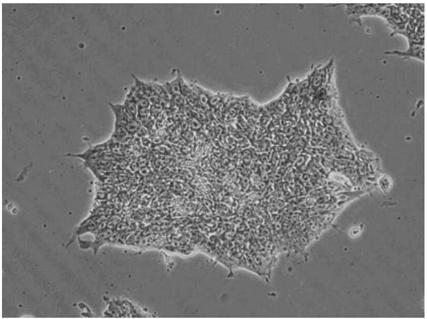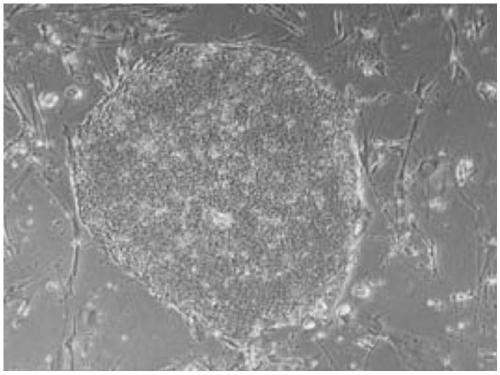Method for acquiring highly-purified conduction cell derived from multipotent stem cell on basis of HCN4 double reporter genes
A technology of pluripotent stem cells and dual reporter genes is applied in the field of obtaining highly purified conducting cells derived from pluripotent stem cells based on the HCN4 double reporter gene, which can solve the problems of low differentiation efficiency of conducting cells and efficient acquisition of conducting cells, so as to avoid adverse effects. , the effect of wide application prospects
- Summary
- Abstract
- Description
- Claims
- Application Information
AI Technical Summary
Problems solved by technology
Method used
Image
Examples
Embodiment Construction
[0062] The present invention will be further described below, but the implementation of the present invention is not limited thereto.
[0063] 1. Cultivation and identification of hiPSC-HCN4-GFP-puromycin ( figure 1 ) and hESC-HCN4-GFP-puromycin ( figure 2 ).
[0064] a) Culture in E8 medium on a Matrigel-coated petri dish, add 10 μM ROCK inhibitor, and change the E8 medium the next day;
[0065] b) When the density reaches 80% again, use Oct4 / SSEA4 to verify the dryness.
[0066] 2. Targeted induction of hiPSC-HCN4-GFP-puromycin ( image 3 ) and hESC-HCN4-GFP-puromycin ( Figure 4 ) differentiate into conducting cells
[0067] a) On the fourth day, when the cell growth density reached 80%-90%, the culture medium was replaced with a differentiation medium, which was the first day of differentiation, and CHIR (concentration 0.6 μL / mL), BMP4 (concentration 10 ng / mL), ACTA ( Concentration 6ng / mL) and bFGF (concentration 5ng / mL), maintain 72h;
[0068] b) On the third day ...
PUM
 Login to View More
Login to View More Abstract
Description
Claims
Application Information
 Login to View More
Login to View More - R&D Engineer
- R&D Manager
- IP Professional
- Industry Leading Data Capabilities
- Powerful AI technology
- Patent DNA Extraction
Browse by: Latest US Patents, China's latest patents, Technical Efficacy Thesaurus, Application Domain, Technology Topic, Popular Technical Reports.
© 2024 PatSnap. All rights reserved.Legal|Privacy policy|Modern Slavery Act Transparency Statement|Sitemap|About US| Contact US: help@patsnap.com










